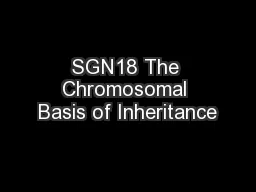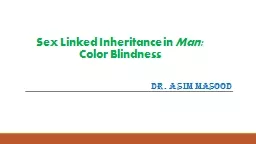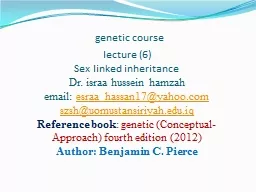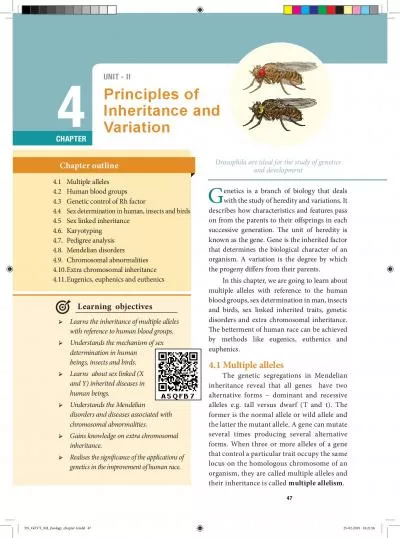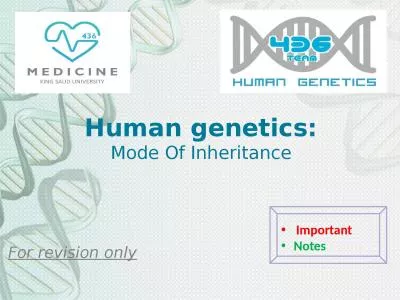PPT-Sex Linked Inheritance A human female, has
Author : joy | Published Date : 2024-01-29
23 pair of chromosomes A human male has 22 similar pairs and one pair consisting of two chromosomes that are dissimilar in size and structure The 23 rd pair in
Presentation Embed Code
Download Presentation
Download Presentation The PPT/PDF document "Sex Linked Inheritance A human female, ..." is the property of its rightful owner. Permission is granted to download and print the materials on this website for personal, non-commercial use only, and to display it on your personal computer provided you do not modify the materials and that you retain all copyright notices contained in the materials. By downloading content from our website, you accept the terms of this agreement.
Sex Linked Inheritance A human female, has: Transcript
Download Rules Of Document
"Sex Linked Inheritance A human female, has"The content belongs to its owner. You may download and print it for personal use, without modification, and keep all copyright notices. By downloading, you agree to these terms.
Related Documents


